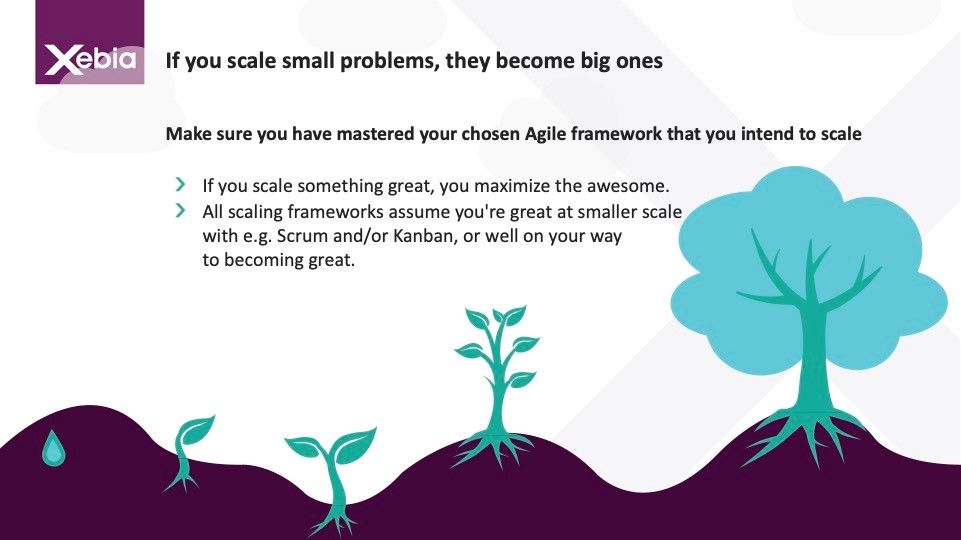What Everyone Needs to Know About Agile Scaling Frameworks
Many organizations use an Agile scaling framework that scales Scrum, such as SAFe, Nexus, LeSS, Spotify, or Scrum@Scale. However, do you really need to scale Agile? And how do you know?
In this blog, you will learn more about how you can know whether you should scale Agile or not.
8 March 2024
Large organizations often have many cross-functional and cross-disciplinary teams working on different products and services. To help them do so effectively in a complex environment, many organizations use an Agile scaling framework that scales Scrum, such as Nexus, SAFe, LeSS, Spotify, or Scrum@Scale.
To be sure, there is nothing wrong with that. If you need a scaling framework, that is.
“Most organizations seem unaware of The Prime Directive of Agile Scaling: Don’t. Do not scale if you don’t have to.”
The Prime Directive of Agile Scaling
Most organizations that use Agile scaling frameworks seem unaware of The Prime Directive of Agile Scaling: Don’t. Do not scale if you don’t have to.
How do you know if you have to scale? Some companies start scaling when they realize that they cannot develop their product within the confines of a single team.
Other companies start scaling when they realize that they can’t complete the work they need to do within the preferred time frame. When do they realize this? When they have tried to create the product or service with one to five Scrum Teams. That is, when they have tried — and failed — to deliver a sufficient number of done increments with plain vanilla Scrum.
Have You Really Tried Scrum?
If you have not yet tried to scale Scrum and it is working well for you, don’t. The benefits of Scrum come from its simplicity. When you start adding processes on top of Scrum, you lose those benefits. So unless you need to scale Scrum, don’t.
If you have tried Scrum and it is not working well for you, don’t scale either. Scaling a framework that is not working will not make it work. You need to diagnose and fix the problems with Scrum before scaling it.

When you have to scale Scrum, there are many scaling frameworks to choose from. Many of them are based on the Scaled Agile Framework (SAFe). SAFe is a good framework, but it is not the only one. Other frameworks, such as LeSS and Spotify, might be a better fit for your organization.
All of these frameworks assume you’re great at a smaller scale with, for example, Scrum and Kanban, or well on your way to becoming great.
How to Pick the Right Scaling Framework
The key thing is to pick the right framework for your organization. Don’t just use SAFe because somebody sold you on it. The truth is, it doesn’t matter which one you pick, as long as you avoid the urge to, as Craig Larman puts it, pragmatically customize it for local concerns.
So, if it doesn’t matter which framework you pick, and you know you need to pick one because you have tried Scrum at a smaller scale only to discover you need more than five teams to get it done, how do you choose?
Try them all. Seriously. Invite your teams to run some experiments with all frameworks. Consider using OpenSpace Agility as an implementation framework. Then, let them decide which one is most likely to work well for them. Be prepared to be surprised!
Suggested Training Course
Agile Scaling Frameworks Essentials
Learn about the different Agile scaling frameworks, such as SAFe, LeSS, Scrum@Scale, Nexus, and the Spotify model, in just one day. Gain insights into how to choose which framework best suits your organization.
Related content
What is SAFe?
How SAFe 6.0 Is Revolutionizing Agile: 6 Key Changes You Need to Know
Ask me anything!
Get in touch with Laurens Bonnema, a trainer in Agile and Scrum, Leadership, Obeya, and many other courses at Xebia Academy. He will be happy to help you.